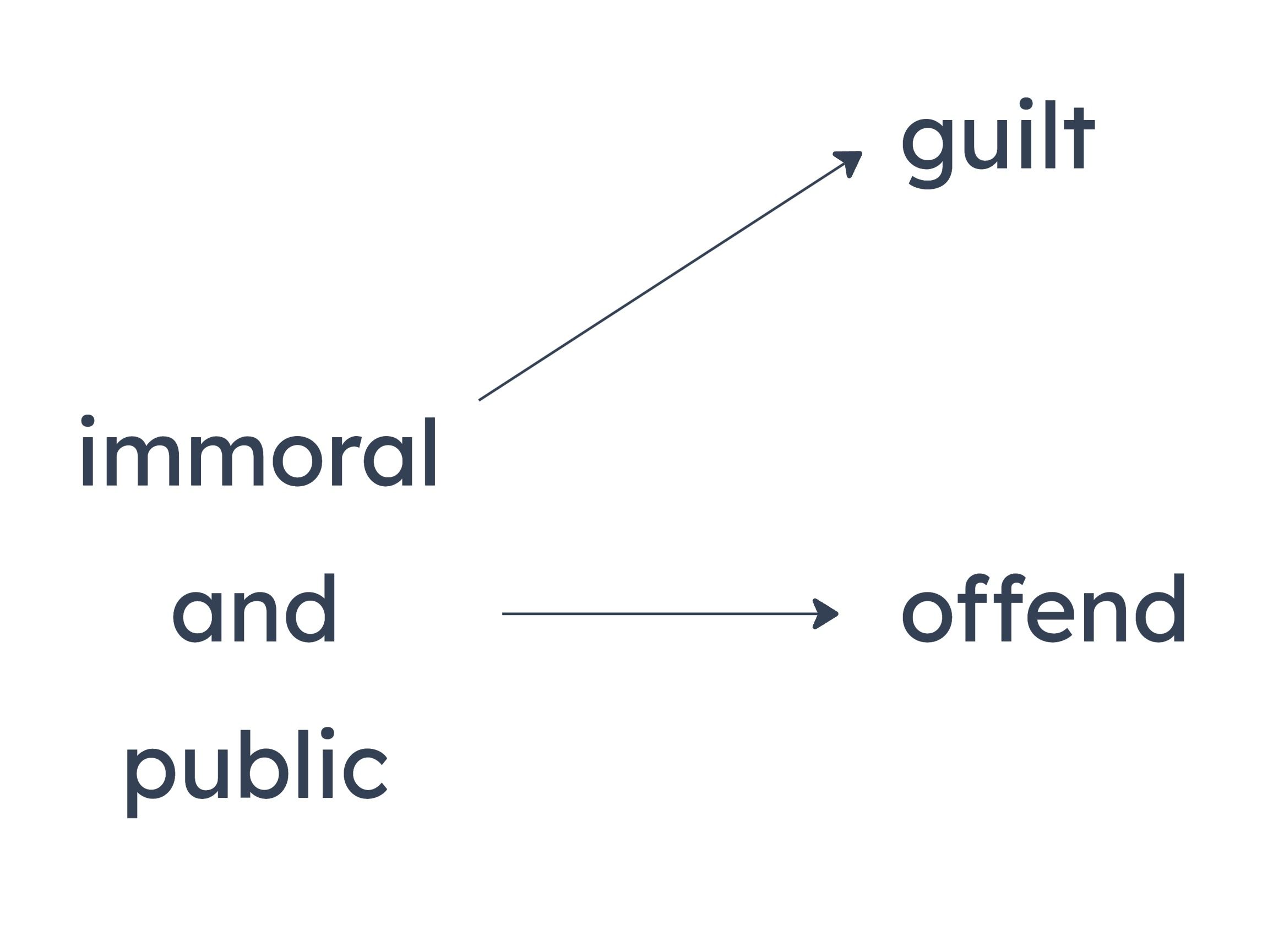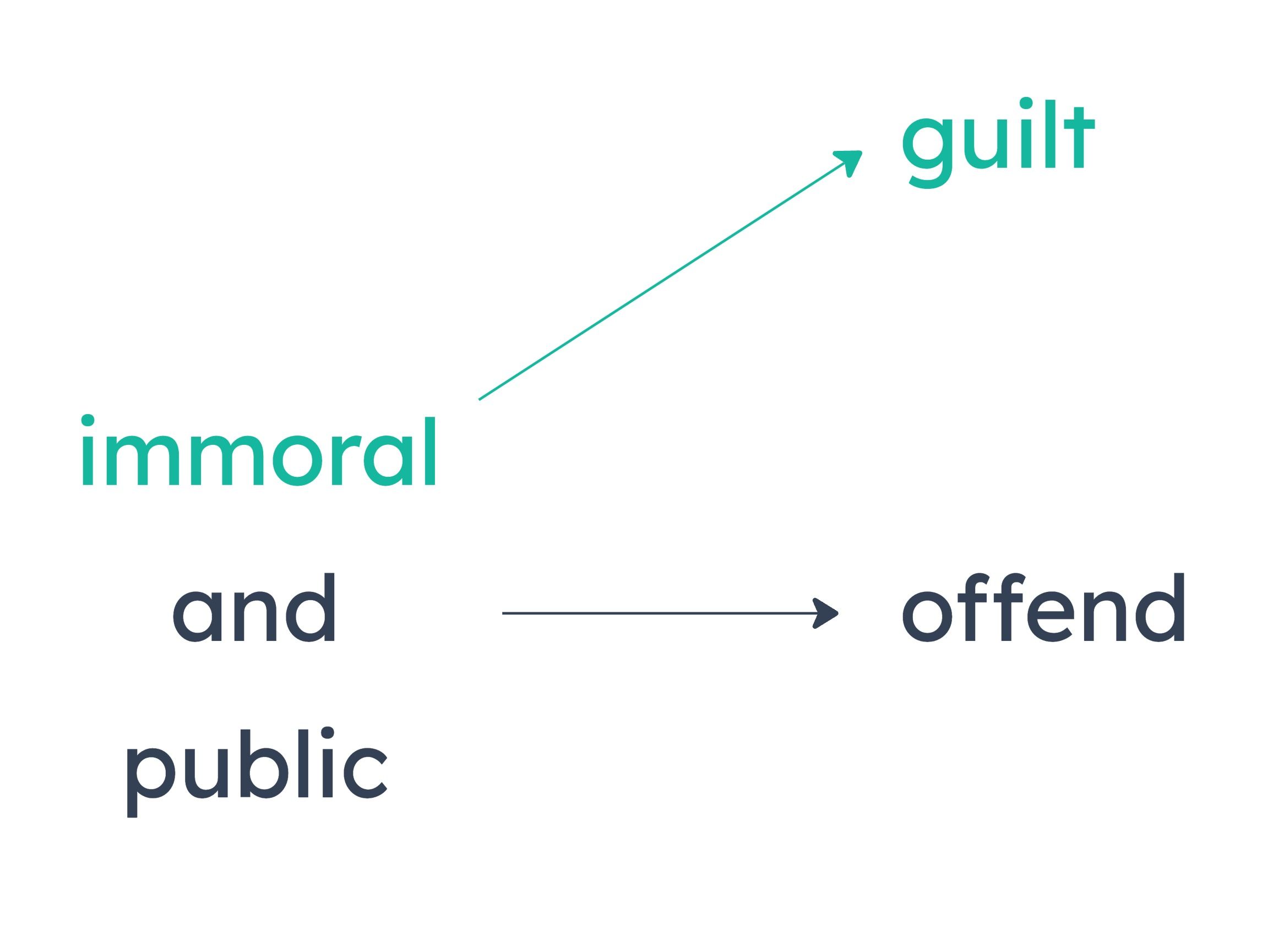A
Contrary to the findings of two major studies, there is reason to think that procedure X causes disorder Y.
B
Two studies that discovered no causal link between procedure X and disorder Y are unsound.
C
Researchers should conduct more-extensive studies of procedure X to determine whether the procedure is causally linked with disorder Y.
D
The two studies cited did not reach a conclusion as to whether disorder Y results from procedure X.
E
Despite the opinions of many medical experts, it has not been established that there is a causal link between procedure X and disorder Y.
All immoral actions are accompanied by feelings of guilt.

A
Some immoral actions that are not performed in public are not accompanied by feelings of guilt.

B
Immoral actions are wrong solely by virtue of being accompanied by feelings of guilt.
C
Some actions that offend public sensibilities if they are performed in public are not accompanied by feelings of guilt.
D
Some actions that are accompanied by feelings of guilt are not immoral, even if they frequently offend public sensibilities.
E
Every action performed in public that is accompanied by feelings of guilt is immoral.
A
By varying the pitch of its alarm call, a vervet monkey can indicate the number of predators approaching.
B
Different land-based predators are responsible for different numbers of vervet monkey deaths.
C
No predators that pose a danger to vervet monkeys can attack both from land and from the air.
D
Vervet monkeys avoid land-based predators by climbing trees but avoid predation from the air by diving into foliage.
E
Certain land-based predators feed only on vervet monkeys, whereas every predator that attacks vervet monkeys from the air feeds on many different animals.
Technological improvements will enable food production to increase as populations increase. However, increases in food production will be negligible unless societies become more centralized so that all factors contributing to the production of food can be better coordinated. But, historically, the more centralized a society was, the greater the percentage of its people who perished if and when it collapsed. Thus, increasing the centralization of societies in an effort to increase food production via better technology will merely exacerbate the disasters associated with societal collapse.
Summary
As populations increase, technological progress will enable food production to also increase. If societies do not become more centralized, such that the factors contributing to food production can be better coordinated, then increases in food production from technology will be small. Historically, more centralized societies had a greater number of people die if it collapsed. Increasing centralization can therefore worsen the outcome of a societal collapse.
Strongly Supported Conclusions
It is impossible to significantly increase food production from technological gains without also worsening the risk of potential societal collapse. Technological improvements may prevent some, but not all, harms that occur when populations increase.
A
The more centralized a society is, the greater its need for increased food production.
This is unsupported because the author states that a greater need for food production may arise due to population increases, not necessarily due to increases in centralization.
B
Not every problem associated with the collapse of a centralized society would be prevented by technological improvements.
This is strongly supported because while the technology may help prevent food from running out, it may not prevent a large loss of life if societies become more centralized and then collapse.
C
The rate at which the world’s population is growing will continue to increase indefinitely.
This is unsupported because the author gives us no indication on how population changes will progress in the far future.
D
The production of food can be increased only by improved technology.
This is unsupported because the author states that technology may cause food production to increase, not that technological progress is a necessary condition of food production.
E
Societies have become more centralized as technology has improved.
This is unsupported because the author only states that societies will have to become more centralized to see major food gains from technological improvements, not that society has become more centralized.